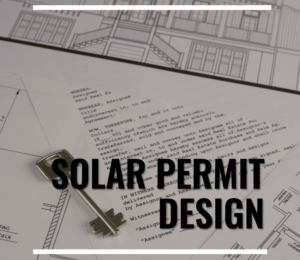10 Essential Steps for Obtaining a Solar Permit Design

Installing a solar energy system is an excellent way to reduce energy costs and promote sustainable living. However, before you can begin installation, you must navigate the often complex process of obtaining a solar permit. Proper planning and understanding of the necessary steps can streamline this process, ensuring your project stays on schedule and within budget. Here are ten essential steps for obtaining a solar permit design.
- Research Local Regulations and Requirements
The first step in obtaining a solar permit is understanding the specific regulations and requirements of your local jurisdiction. Building codes, zoning laws, and permit requirements can vary significantly from one area to another. Researching these regulations early in the process will help you avoid delays and ensure compliance with all local laws.
Key Actions:
- Visit your local building department’s website.
- Contact local officials to clarify any ambiguous requirements.
- Review state and local building codes related to solar installations.
- Conduct a Site Assessment
A thorough site assessment is crucial for determining the feasibility of your solar project. This includes evaluating the structural integrity of your roof (if it’s a rooftop installation), assessing shading from nearby structures or trees, and ensuring the site receives adequate sunlight.
Key Actions:
- Hire a professional to conduct a structural assessment.
- Use tools like solar pathfinders or software to analyze shading and sun exposure.
- Identify any potential obstructions that could impact your solar array.
- Develop a Solar Design Plan
Your solar design plan should include detailed drawings and specifications for the proposed system. This plan will typically cover the layout of solar panels, electrical schematics, and mechanical drawings. It’s essential that this plan adheres to both local building codes and the National Electrical Code (NEC).
Key Actions:
- Create detailed site plans and electrical diagrams.
- Ensure the design complies with NEC standards and local building codes.
- Work with a qualified solar designer or engineer.
- Prepare Structural and Electrical Engineering Documents
Most jurisdictions require stamped engineering documents to verify that your solar installation will be safe and structurally sound. These documents are usually prepared by licensed structural and electrical engineers.
Key Actions:
- Obtain structural calculations and load analyses from a licensed engineer.
- Have an electrical engineer review and stamp your wiring diagrams and system specifications.
- Ensure all engineering documents are up to date and comply with current standards.
- Compile Required Documentation
Before submitting your permit application, gather all necessary documentation. This typically includes your design plans, engineering documents, equipment specifications, and any additional forms required by your local permitting authority.
Key Actions:
- Create a checklist of required documents based on local regulations.
- Compile datasheets and spec sheets for all major components (e.g., solar panels, inverters).
- Include any additional documentation such as homeowner association (HOA) approvals, if applicable.
- Submit the Permit Application
With all documentation in hand, you can submit your permit application to the relevant authorities. Ensure that your application is complete and accurate to avoid delays.
Key Actions:
- Fill out all application forms thoroughly.
- Attach all required documents and plans.
- Pay any applicable permit fees.
- Respond to Plan Check Comments
Once your application is submitted, it will be reviewed by local authorities. They may provide comments or request additional information. Promptly addressing these comments will help expedite the approval process.
Key Actions:
- Review any feedback or comments from the plan checkers.
- Make necessary revisions to your plans or provide additional documentation.
- Resubmit revised plans and documents as needed.
- Schedule and Pass Inspections
After your permit is approved, inspections will be scheduled at various stages of the installation process. These inspections ensure that the work is being carried out according to the approved plans and complies with all relevant codes.
Key Actions:
- Schedule inspections at the appropriate stages (e.g., pre-installation, mid-installation, final).
- Prepare your site and documentation for each inspection.
- Address any issues identified by inspectors promptly.
- Obtain Utility Interconnection Approval
If your solar system will be connected to the grid, you will need approval from your local utility company. This often involves submitting additional documentation and scheduling a final inspection.
Key Actions:
- Submit an interconnection application to your utility company.
- Provide all required documentation, including your approved permit and system specifications.
- Schedule and pass any additional inspections required by the utility.
- Receive Permission to Operate (PTO)
Once all inspections are passed and utility interconnection is approved, you will receive Permission to Operate (PTO) from your utility company. This is the final step before you can officially start using your solar energy system.
Key Actions:
- Ensure all inspections are completed and passed.
- Confirm that all paperwork is submitted and approved.
- Receive PTO and begin operating your solar system.
Conclusion
Navigating the solar permit process can be complex, but understanding each step can help ensure a smooth and efficient experience. By researching local regulations, conducting thorough site assessments, and preparing detailed plans and documentation, you can streamline the permitting process and move forward with your solar installation confidently.
At One Place Solar, we specialize in solar permit design and have extensive experience helping clients navigate the permitting process. Our team of experts is here to assist you every step of the way, ensuring your project is compliant, efficient, and successful.
Contact Us: Phone: +1 209 682 5630 Email: info@oneplacesolar.com
Partner with One Place Solar to simplify your solar permitting process and achieve your renewable energy goals.
